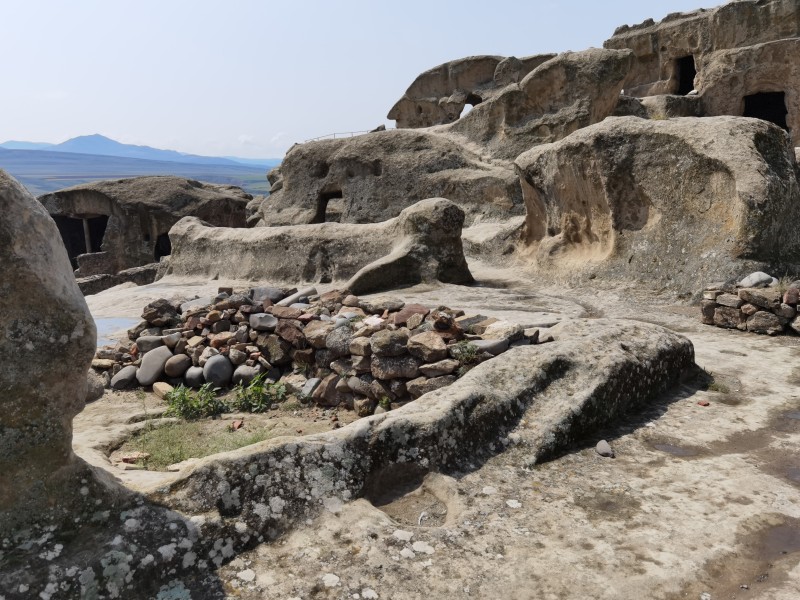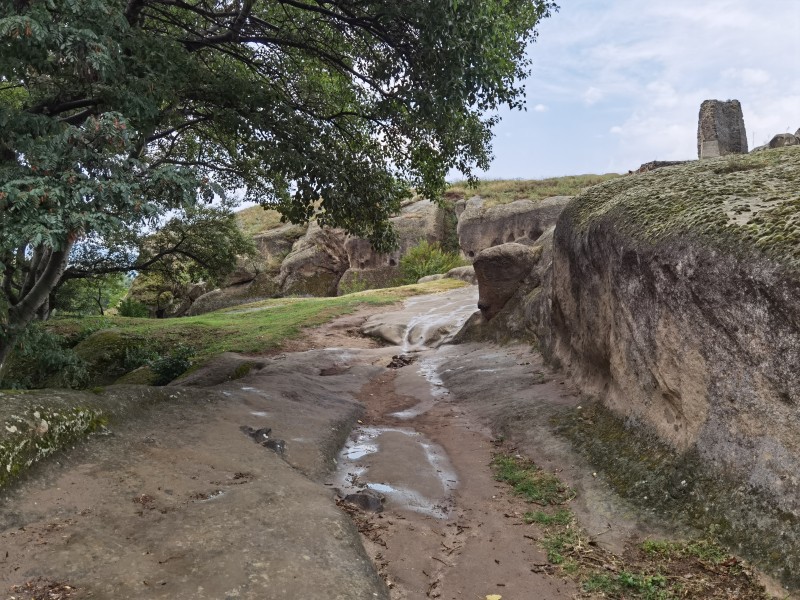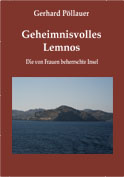|
The great rock-hewn town Uplistsikhe is a very imposing historic site of Georgia. It is situated seventy kilometers west of Tbilisi, on the left bank of the River Mtkvari. |


rock structures of the town Uplistsikhe |
|
According to the archaeologists, the origins of this site date back to the late Bronze Age, to the 2nd millennium BC. It is one of the earliest towns of Georgia, but it is the architecture which makes it so awesome. Due to its age there arises the question whether there is any reference of a town in the ancient Nart sagas. This extraordinarily rich folk literature of the Caucasus is very old and deeply rooted in the tradition of the indigenous peoples of the Caucasus. The myths and legends reflect a society where women have an important, perhaps even a predominating role.
In the fourth saga titled 'Satanaya and Argwana' following story is told:
This town Ghund-Ghund is described as a labyrinth. Actually, Uplisziche also creates the impression that it is a labyrinth considering the winding alleys and paths which weaves through the many rock-cut structures.
|

rock-hewn road - the ascent to the town |

rock building |

basement of rock rooms |

>>> close-up <<< 
rock engravings and petroglyths |

view from the rock-hewn town Uplistsikhe to the river Mtkwari with a peephole in direction to the river |
|
The main elements of the architecture in Uplisziche are: rock-cut rooms, narrow rock cut paths and alleys, deep niches, rock-hewn cisterns, rock-hewn courtyards with rock-hewn benches follow the perimeter of the courtyard. Many of these features you will rediscover at the rock-hewn monuments in the Thermodon area of northern Turkey, so at Tekkeköy and Karpu Kale, as well as on the Greek island Lemnos at Myrina. |
| B o o k s | |
|
Gerhard Pöllauer: The Lost History of the Amazons Recent research findings on the legendary women nation ISBN: 978-1-4461-9305-1; Paperback, 148 pages, 87 black-and-white pictures, 3 illustrations Price: $17.48
This book focuses on the numerous traces of the Amazons.
It reports on latest findings and investigation in the legendary homeland of the Amazons at the
river Thermodon and on the Amazon island Lemnos. |

|
|
Gerhard Pöllauer, Geheimnisvolles Lemnos. Die von Frauen beherrschte Insel (Mysterious Lemnos. Island dominated by women) ISBN: 978-3-902096-77-7; Paperback, 128 pages, 97 black-and-white pictures, 3 color photos, 1 map Price: EUR 13.00
The rather unknown North Aegean island Lemnos amazes with its great prehistoric past.
About 5000 years ago there existed a highly-developed civilization which created imposing cities,
mighty rock buildings and impressive sanctuaries on this Greek island. The discovery of Poliochni was sensational.
Because of its largeness and refinement this Bronze Age settlement is regarded as the most ancient city of Europe.
Also the discoveries at Myrina in the west and Hephaistia in the north witness the island's
prehistoric importance. Presumably there was a further city in the Northeast - Chryse, which was sunken under the sea.
|

|
Updated: November 28, 2025

|

|

|

|

|

|

|

|
Picture Gallery and Books *** Our Projects *** About Us Copyright © 1997-2025 Amazon Research Center |

|